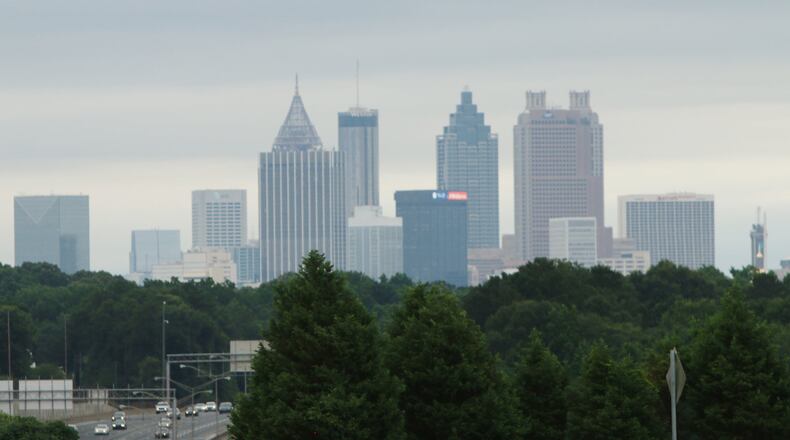After a pair of recent multi-year efforts to rewrite Atlanta’s tree ordinance sputtered, City Council on Monday passed several revisions to the city’s dated rules, the first new measures approved in years.
The updates — passed unanimously by the 13 councilmembers present Monday afternoon — establish new rules for planting trees in parking lots and along streets surrounding new residential and commercial developments, among other regulations. But the additions fall well short of broader changes sought by conservationists and environmental advocates.
“Trees are worthy of being seen as an asset, rather than an obstacle,” said Norma Harris, a resident of Atlanta’s District 12 during City Council’s public comment session. “The tree ordinance is the only way we have to speak on behalf of the trees and their value to us who live here.”
Atlanta prides itself on being a “city in a forest.” But Atlanta’s tree ordinance has not undergone a wholesale rewrite since 2001, and the last significant updates were passed roughly 15 years ago, around the time the Great Recession began. In the years since, as the economy rebounded, the city has experienced population growth and a massive development boom.
At the same time, the city’s tree cover has declined.
Surveys conducted by researchers at Georgia Tech found that in 2018, the city’s canopy coverage had shrunk to 46.5%, a decline of roughly 1.5 percentage points from where it stood in 2008, for an average loss of 0.43 acres of canopy every day over that time period. Atlanta’s long standing goal is to have 50% canopy coverage.
City Council began working on a rewrite in 2014, but two multi-year attempts to recast the ordinance petered out, with developers, tree advocates, the city and other parties unable to agree on certain issues, like how much it should cost to remove a tree.
After failing in previous attempts to pass a full revamp, the council is taking a phased approach to updating the ordinance this time around. The changes approved Monday in “Phase 1″ make some modest but significant changes.
For new parking lots in the city, developers must plant or preserve at least one tree for every eight parking spots and no parking space can be more than 45 feet from a tree. Any new residential or commercial development is now required to have trees planted every 40 feet along all public or private streets surrounding it. The amendments also include new soil volume and spacing requirements to help ensure newly planted trees survive, plus new tree species mix requirements based on the size of the project.
Councilmember Jason Dozier, who represents District 4 and chairs the Community Development and Human Resources Committee, praised Monday’s successful passage, while acknowledging that much more work remains to be done. Dozier, who is spearheading this latest effort to strengthen the tree ordinance, said he plans to work with stakeholders on Phase 2 updates in the New Year.
“This is monumental in the sense that it’s the first change that we’ve made to this in decades, but this is not the only change that we’re going to make and I look forward to the next round of discussion and debate,” Dozier said.
The updates come as the risk of extreme heat events, like those Atlanta experienced this summer, are increasing around the globe due to human-caused climate change.
Heat waves, like many other weather events intensified by climate change, are often felt most acutely in lower-income areas and communities of color, experts say. Often, those neighborhoods have fewer trees and more heat-absorbing surfaces, like roads and parking lots, which can make ground-level temperatures feel even hotter.
As climate change raises the likelihood for intense rainfall events, trees are also key to managing storm water runoff and preventing flooding, especially in urban areas.
Several tree advocates spoke passionately about the need to preserve the city’s canopy during the public comment portion of Monday’s meeting. Kathryn Kolb, a naturalist and conservationist who has been active in efforts to modernize the ordinance, said Monday’s updates were progress, but called on the council to move swiftly next year on the next round of changes.
“We ask you to work with us quickly and early in the new year to vote forward additional amendments that truly serve the public good and protect more of our best trees, even while we build a better city,” Kolb said.
Councilmembers Keisha Sean Waites and Mary Norwood were not present for the tree ordinance vote.
A note of disclosure
This coverage is supported by a partnership with 1Earth Fund, the Kendeda Fund and Journalism Funding Partners. You can learn more and support our climate reporting by donating at ajc.com/donate/climate/
About the Author
Keep Reading
The Latest
Featured




